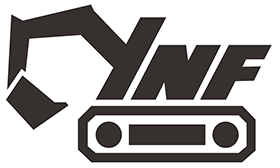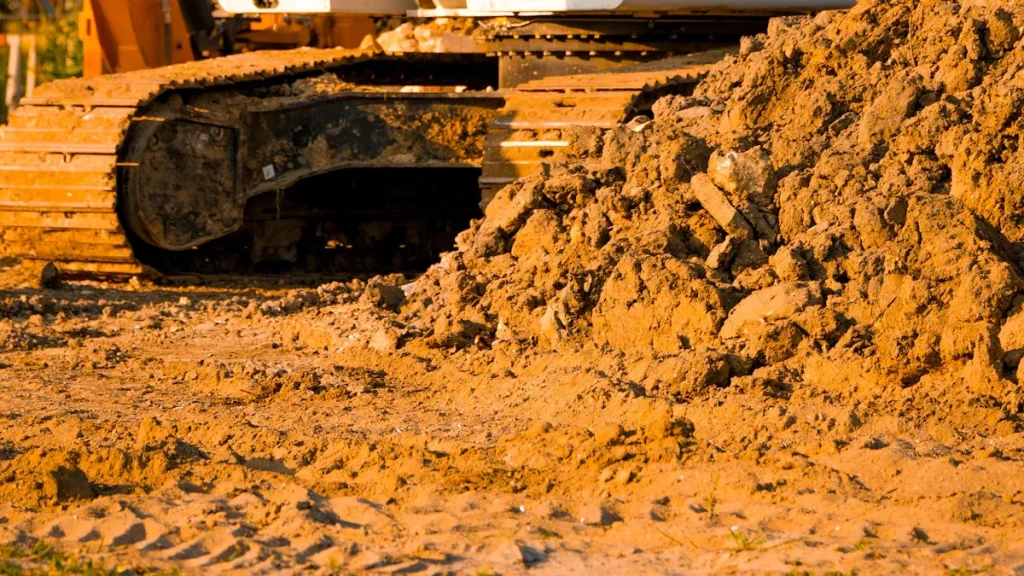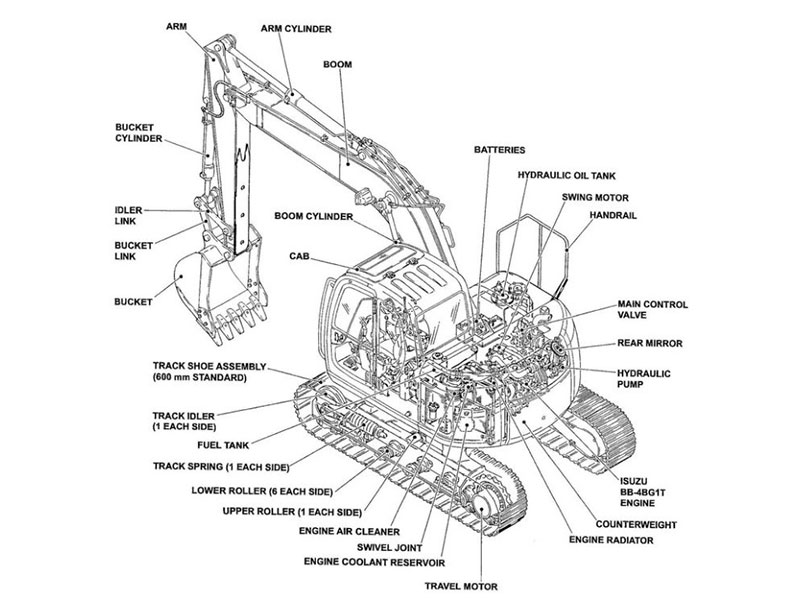
You will see that the parts most often replaced on a 245 cat excavator are hydraulic system parts, undercarriage parts, filters, electrical items, and engine parts. These 245 cat excavator parts get used a lot every day. Dirt, shaking, and hard work make them wear out. Fast replacement keeps your excavator working well. Good care saves money and stops long breaks.
Key Takeaways
Hydraulic parts like pumps, valves, and cylinders can wear out fast. They need regular checks for leaks and slow movement.
Undercarriage parts like tracks, rollers, and idlers work in tough places. They need cleaning and checking to stop breakdowns.
Filters, batteries, and sensors should be changed on time. This helps the engine and hydraulic systems work well.
Engine belts, hoses, pulleys, and the cooling system need many checks. This stops sudden problems and overheating.
Keeping a maintenance log and looking for early wear saves money. It also helps your excavator work every day.
Hydraulic System Parts
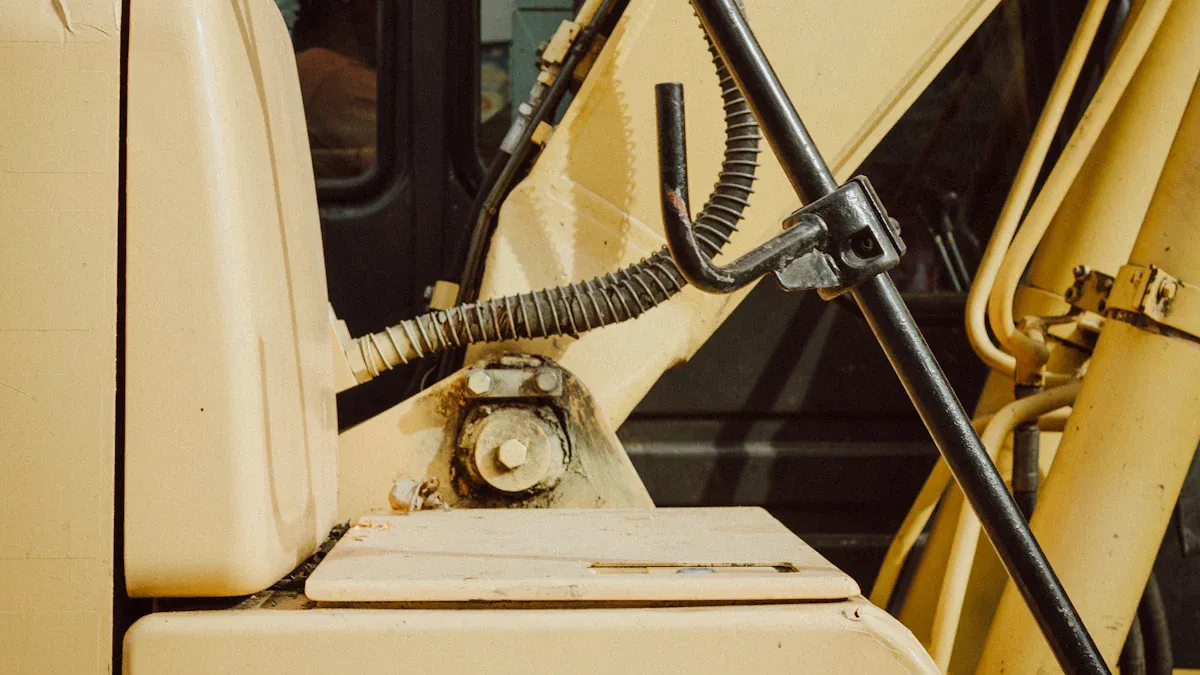
The hydraulic system is very important for your excavator. You use it to lift, dig, and move heavy things. This system has pumps, valves, and cylinders. These parts work hard every day. They often need to be replaced so your excavator works well.
Pumps and Valves
Hydraulic pumps move fluid through the system. Control valves send this fluid to different parts. If your machine moves slow or sounds strange, there may be a problem. Leaks or weak power can mean pumps or valves need to be replaced.
Tip: Look for oil leaks near the pump and valve. Listen for whining or grinding when you use the machine.
Some reasons pumps and valves wear out are:
High pressure when digging
Dirty hydraulic fluid
Old seals and gaskets
You can help these parts last longer with regular care. Change the hydraulic fluid and filters when needed. Keep the pump and valve area clean to stop dirt from getting in.
Cylinders
Cylinders help move the bucket, arm, and boom. These parts get a lot of stress. You might see oil leaking from the cylinder seals. Jerky movements can also mean the cylinder needs to be replaced soon.
Watch for these signs of cylinder wear:
Oil leaks at the ends of the cylinder
Slow or uneven movement
Dents or scratches on the cylinder rod
Note: Check cylinder rods for damage after each use. Finding problems early helps you avoid bigger repairs.
Cleaning and checking for leaks helps your hydraulic system stay strong. Fixing problems quickly saves you time and money.
Undercarriage Components
The undercarriage supports your excavator and lets it move across rough ground. You need to check these parts often because they face dirt, rocks, and heavy loads every day. Good maintenance helps you avoid sudden breakdowns and keeps your machine running smoothly.
Tracks
Tracks carry the weight of your excavator and help it travel over mud, gravel, and uneven surfaces. You will notice that tracks wear out faster if you work in harsh conditions. Look for signs like sagging, missing pads, or cracks. If you hear loud clanking or see the track slipping, you may need a replacement soon. Most tracks last about 2,000 to 3,000 hours, but this depends on how you use your machine.
Tip: Clean the tracks after each use. Dirt and rocks stuck in the tracks can cause faster wear.
Rollers and Sprockets
Rollers guide the tracks and keep them in place. Sprockets drive the tracks forward. You should listen for grinding noises or feel for rough movement. These signs mean the rollers or sprockets might have worn teeth or flat spots. If you see uneven wear or broken pieces, plan for a replacement. Regular maintenance, like greasing the rollers, helps them last longer.
Idlers and Track Links
Idlers keep the tracks tight and help them move smoothly. Track links connect each section of the track. When you see loose tracks or hear squeaking, check the idlers and links. Cracks, bends, or missing pins mean you need to replace these parts. Most idlers and track links last as long as the tracks, but tough jobs can shorten their life.
A good maintenance routine helps you spot problems early. You save money and keep your excavator working hard every day.
Filters and Electrical
Engine and Hydraulic Filters
You need to check the filters on your excavator often. Engine filters keep dirt out of the engine. Hydraulic filters clean the fluid that moves the parts. Dirty filters can slow down your excavator and cause damage. You should replace engine and hydraulic filters after a set number of hours. Most operators change them every 250 to 500 hours.
Tip: Write down the hours each time you change a filter. This helps you remember when to do it again.
Signs that filters need replacement:
Engine loses power
Hydraulic system feels slow
You see dirty fluid or oil
A clean filter helps your excavator run smoothly. You save money by stopping bigger problems before they start.
Batteries and Sensors
Batteries give power to the electrical system. Sensors help you track how your excavator works. You should test the battery often. If your excavator will not start or the lights look dim, you may need a new battery. Cold weather can make batteries wear out faster.
Sensors watch things like oil pressure and temperature. If you see warning lights or hear alarms, check the sensors. Broken sensors can give wrong readings. You should replace them if they stop working.
Part | Signs of Wear | Replacement Tip |
|---|---|---|
Battery | Slow start, dim lights | Test voltage often |
Sensor | Warning lights, false alarms | Check connections |
Good care of filters, batteries, and sensors keeps your excavator ready for work. You avoid delays and keep your machine safe.
Engine Parts
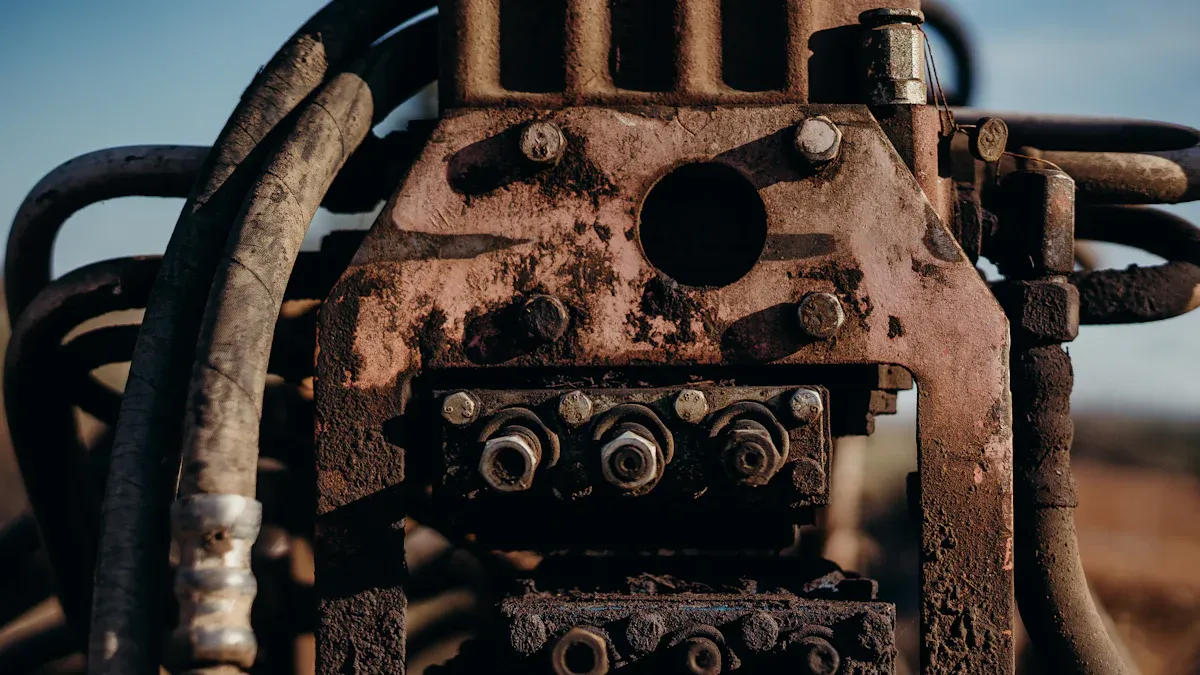
Belts and Hoses
You depend on belts and hoses to keep your excavator running. Belts drive important parts like the alternator and water pump. Hoses move fluids to different engine systems. Over time, heat and vibration can crack belts or make hoses leak. If you hear squealing or see worn spots, you should check these parts right away.
Tip: Squeeze hoses gently. If they feel soft or brittle, you need to replace them soon.
A broken belt or leaking hose can stop your excavator fast. You should inspect these parts during every maintenance check.
Pulleys and Tensioners
Pulleys guide the belts and keep them tight. Tensioners hold the right amount of pressure on the belts. If a pulley wobbles or a tensioner feels loose, your excavator may not work well. You might hear rattling or see the belt slip off.
Check pulleys for rust or damage.
Make sure tensioners move smoothly.
Replace any part that does not spin freely.
A good pulley and tensioner system helps your engine run without problems.
Cooling System
The cooling system keeps your excavator engine from overheating. It uses a radiator, fan, and coolant hoses. Dirt and dust can block the radiator fins. Old coolant can cause rust inside the engine. If you see steam or the temperature gauge rises, you need to check the cooling system.
Part | What to Check For | Action Needed |
|---|---|---|
Radiator | Clogs, leaks | Clean or replace |
Coolant | Low level, dirty | Refill or flush |
Fan | Broken blades | Replace if damaged |
Note: Always let the engine cool before opening the radiator cap.
A strong cooling system protects your excavator and keeps it working hard every day.
245 Cat Excavator Parts Reference
Replacement Frequency
It is important to know when to change the most used 245 cat excavator parts. Checking these parts often helps stop sudden problems. Here is a simple chart for when to replace each part:
Part | Replacement Interval |
|---|---|
Hydraulic Pumps & Valves | Every 3,000-5,000 hours |
Hydraulic Cylinders | Every 4,000-6,000 hours |
Tracks | Every 2,000-3,000 hours |
Rollers & Sprockets | Every 2,500-4,000 hours |
Idlers & Track Links | Every 2,000-3,000 hours |
Every 250-500 hours | |
Batteries | Every 2-3 years |
Sensors | As needed |
Belts & Hoses | Every 1,000-2,000 hours |
Pulleys & Tensioners | Every 2,000-3,000 hours |
Cooling System Parts | Every 2,000-3,000 hours |
Tip: Write down each time you change a part in your logbook. This helps you remember the hours and plan for the next check.
Key Wear Indicators
You can find problems early if you watch for these signs. Fixing things fast keeps your excavator working and saves money.
Hydraulic System: Watch for oil leaks, slow moves, or odd sounds.
Undercarriage: Look for sagging tracks, cracks, or missing pads.
Filters: Check for dirty fluid, less power, or slow hydraulics.
Electrical: Test batteries if lights are dim or starts are slow. Change sensors if warning lights stay on.
Engine Parts: Listen for squealing belts, look for hose leaks, and check pulleys for rust.
Cooling System: Watch for steam, high heat, or coolant leaks.
🛠️ Taking good care of your 245 cat excavator parts helps you avoid big repair bills. You keep your excavator ready to work every day.
If you pay attention to the parts that get replaced a lot, your excavator will keep working well. Checking these parts often helps you find problems early. Changing them on time stops big and expensive breakdowns. Look at the reference section to help plan your maintenance. Taking care of your machine before problems happen makes it last longer and keeps it working when you need it.
FAQ
How often should you inspect your excavator for worn parts?
You should check your excavator before each workday. Look for leaks, cracks, or loose parts. Early checks help you find problems before they stop your machine.
What is the best way to extend the life of your excavator’s undercarriage?
Clean the undercarriage after every use. Remove dirt and rocks. Grease moving parts. Regular cleaning and greasing help your excavator last longer.
Why do filters need regular replacement?
Filters trap dirt and keep fluids clean. Dirty filters slow down your machine and can cause damage. Change them on schedule to keep your excavator running well.
Can you use non-genuine parts for repairs?
You can use non-genuine parts, but genuine parts fit better and last longer. Using the right parts helps your excavator work safely and efficiently.
